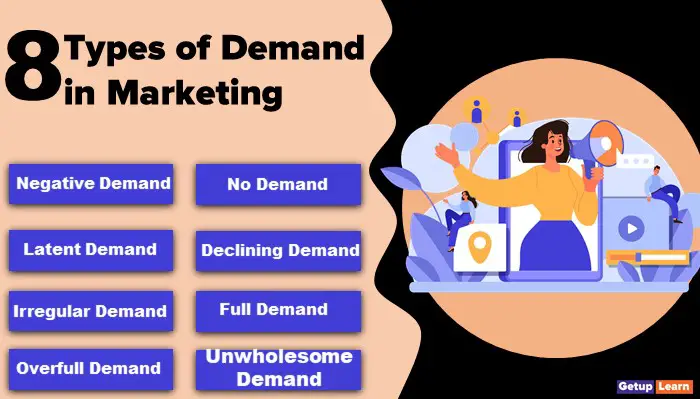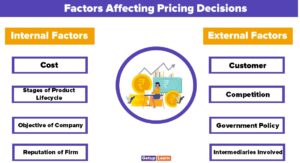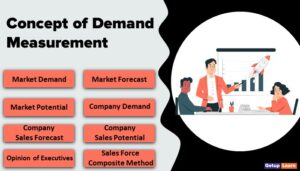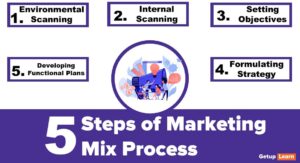
Table of Contents
- 1 Types of Demand in Marketing
-
2 FAQ Related to Types of Demand in Marketing
- 2.1 What are the types of demand in marketing?
- 2.2 What is the meaning of no demand?
- 2.3 What is negative demand with example?
- 2.4 What is latent demand in marketing?
- 2.5 What is declining demand and example?
- 2.6 What is irregular demand?
- 2.7 What is full demand?
- 2.8 What is meant by full demand in marketing?
- 2.9 What is unwholesome demand with example?
Types of Demand in Marketing
Marketers face different market conditions which are related to different states of demand. Especially the pricing strategy largely depends on the variability of demand. According to Kotler, the eight major types of demand in marketing:
- Negative Demand
- No Demand
- Latent Demand
- Declining Demand
- Irregular Demand
- Full Demand
- Overfull Demand
- Unwholesome Demand

Negative Demand
When a particular product is disliked by the majority part of the market, it is in a state of negative demand. Products like vaccinations, heart surgery, dental work, etc. are often avoided by consumers because of the negative feeling. The marketer’s task is to redesign the promotional program and is to reposition the products in the mind of the consumers so that they are able to change their beliefs and attitude about the target market.
No Demand
When the target consumers are either not aware of the product or they are not interested in the product. For example, an industrial house may not be aware of the new technology, and college students of Haryana may not prefer English language courses. The marketer’s job is first to make the target audience aware and then describe the ways that what are the benefits of this product.
Latent Demand
There may be a kind of hidden demand for certain products which is not satisfied with the existing available products. In India, demand for fuel-efficient bigger-size cars, harmless cigarettes, cheaper houses for middle-class employees, etc. is some examples of the strong latent demand.
The marketers’ job is to measure the size of the potential market and take effective steps toward providing goods and services so as to satisfy the demand.
Declining Demand
Every product in its lifespan faces declining demand. This scenario is faced by every kind of organization i.e. from physical goods providers to service organizations. In this kind of circumstances, the marketer has to look into the causes of the decline in demand and should see whether the same product can be carried on in the same market with little modification or should the marketer diversify in the other market to retain the aspect of profitability.
Irregular Demand
The demand for certain products varies on the basis of seasonality. For example, zoos remain vacant during the examination days of the students and are overfull in the days of their summer vacations. Hotels and resorts of certain hill stations are found in great demand during summer but in the off-season, it’s difficult to find out a single consumer.
Here, the marketer’s job is to maintain the demand at the same pattern. He has to find out certain ways like flexible pricing, special schemes, and discounts in the off-season, and through different promotional measures.
Full Demand
It is the happiest position for the marketers because at this juncture their volume of business face full demand. In the era of changing tasks and preferences of the consumers, marketers’ taste is to maintain the current level of demand. Persisting with the quality standards and investing in R & D should be the objectives at this level.
Overfull Demand
Sometimes a peculiar situation arises when organizations face a demand that is higher than their existing capacity. For example, traffic is sometimes overcrowded in a particular place. Due to the announcement of rising in fuel prices by the government, people develop the tendency of hoarding and this situation leads to overfull demand.
The marketer’s job in this situation is to reduce the demand on a temporary basis by adopting the measure of increasing the prices. They may also adopt the concept of ‘demarketing’ i.e. reducing promotion and service.
Unwholesome Demand
This demand relates to a particular category of products like cigarettes, alcohol, drugs, blue movies, etc. The marketer’s job is to make people aware of the fatal nature of these products so that they can give up these products.
What are the types of demand in marketing?
These are the 8 types of demand in marketing given below:
1. Negative Demand
2. No Demand
3. Latent Demand
4. Declining Demand
5. Irregular Demand
6. Full Demand
7. Overfull Demand
8. Unwholesome Demand.
What is the meaning of no demand?
Target customers may be unaware of or uninterested in the product. The marketing task is to find ways to connect the benefits of the product with the person’s natural needs and interests. For example, products that have usually no value to people, like a newspaper published last week. Or, any products that have value but are not in a particular market, like snowmobiles in areas of warm climate.
What is negative demand with example?
A market is in a state of negative demand if a major part of the market dislikes the product and may even pay a price to avoid it. The marketing task is to analyze why the market dislikes the product and whether a marketing program consisting of product redesign, lower prices, and more positive promotion can change the market beliefs and attitudes. For example, vegetarians have a negative demand for meat, and people, in general, have negative demands for vaccinations, dental work, or surgery.
What is latent demand in marketing?
Many consumers may share a strong need that cannot be satisfied by any existing product. The marketing task is to measure the size of the potential market and develop effective goods and services that would satisfy the demand. Like vaccinations for HIV or harmless cigarettes.
What is declining demand and example?
Every organization, sooner or later, faces declining demand for one or more of its products. The marketing task is to reverse the declining demand through creative remarketing of the product. Like: the demand for compact disks (CD) is declining now a day.
What is irregular demand?
Many organizations face demand that varies on a seasonal, daily, or even hourly basis, causing problems of idle or overworked capacity. The marketing task, called synchro-marketing, is to find ways to alter the same pattern of demand through flexible pricing, promotion, and other incentives.
What is full demand?
Organizations face full demand when they are pleased with their volume of business. The marketing task is to maintain the current level of demand in the face of changing customer preferences and increasing competition. The organization must maintain or improve its quality and continually measure consumer satisfaction to make sure it is doing a good job.
What is meant by full demand in marketing?
Some organizations face a demand level that is higher than they can or want to handle. The marketing task, called demarketing, requires finding ways to reduce the demand temporarily or permanently. General demarketing seeks to discourage overall demand and consists of such steps as raising prices and reducing promotions and services. Selective demarketing consists of trying to reduce the demand coming from those parts of the market that are less profitable or less in need of the product. Demarketing aims not to destroy demand but only to reduce its level temporarily or permanently. For example, The campaign in our country insists people take potatoes as a replacement for rice.
What is unwholesome demand with example?
Unwholesome products will attract organized efforts to discourage their consumption. The marketing task is to get people who like something to give it up, using such tools as fear messages, price hikes, and reduced availability. Like books and film piracy, inhaling drugs, and so on.









